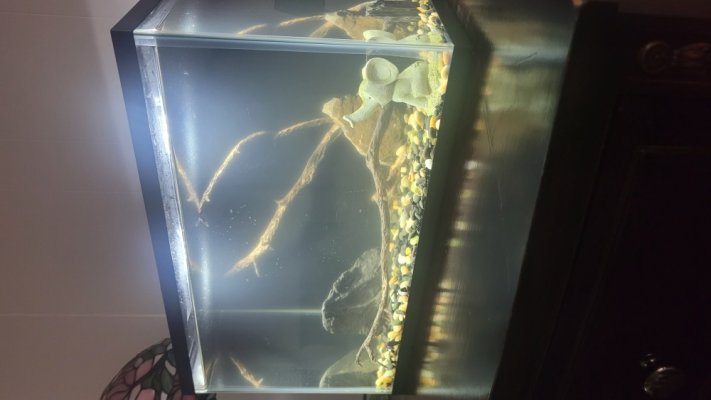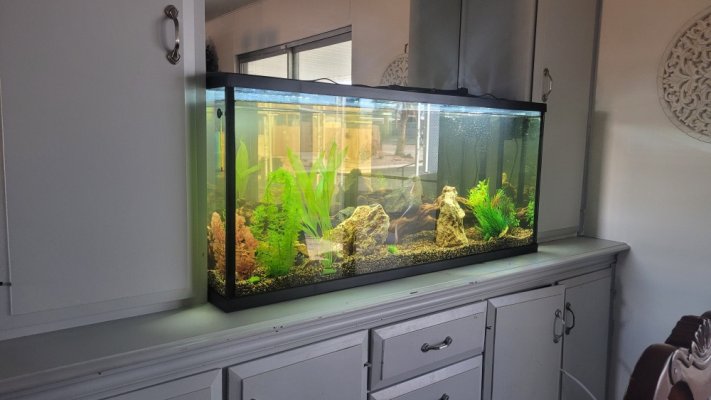Brand new to the hobby. I've started a 55 gallon and a 10 gallon. Both are cycling. 2 weeks in!
I'm looking forward to building my fishy communities. For the 55 gallon, I plan to either do Congo Tertas or Angel Fish as my center piece fish with some schooling fish and a couple other interesting additions. And of course a cleaning crew of some sort. Any suggestions? For the 10 gallon, I'm thinking a Gourami and a few little tetras. And cleaners. Again, suggestions?
So far I have grapewood (its currently going thru its own cycle..waterlogged, tannis already released and now it's in it's white blob growing stage), gravel, and artificial plants. (Any advice on the blob would be great.) The 10 gallon pretty much the same, tho I haven't added any artificial plants yet. I do not plan to do live plants btw. Not interested in the maintenance of that.
Thanks in advance for any input.
I'm looking forward to building my fishy communities. For the 55 gallon, I plan to either do Congo Tertas or Angel Fish as my center piece fish with some schooling fish and a couple other interesting additions. And of course a cleaning crew of some sort. Any suggestions? For the 10 gallon, I'm thinking a Gourami and a few little tetras. And cleaners. Again, suggestions?
So far I have grapewood (its currently going thru its own cycle..waterlogged, tannis already released and now it's in it's white blob growing stage), gravel, and artificial plants. (Any advice on the blob would be great.) The 10 gallon pretty much the same, tho I haven't added any artificial plants yet. I do not plan to do live plants btw. Not interested in the maintenance of that.
Thanks in advance for any input.



 I have always heard tetras do best in a group of at least 5, preferably a few more. I’d consider guppies or 1 betta for the 10 G. The gouramis I know of prefer groups as well & 10 G is awfully small. They can get to a good 4” plus.
I have always heard tetras do best in a group of at least 5, preferably a few more. I’d consider guppies or 1 betta for the 10 G. The gouramis I know of prefer groups as well & 10 G is awfully small. They can get to a good 4” plus.